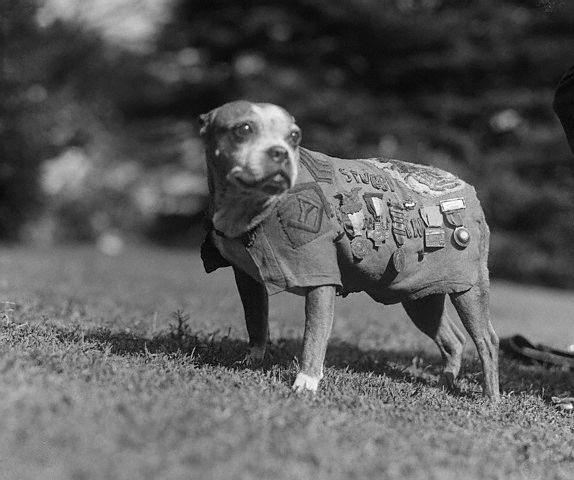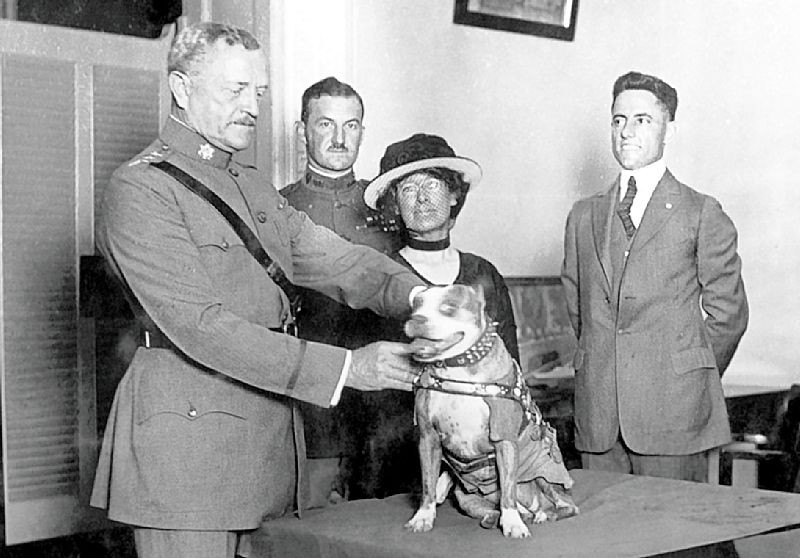
Who were the most unlikely heroes during World War I?
How many know the stories of animal and bird heroes?
Here are a few.
Pigeons and World War I tells the story well:
In October 1918, as the war neared its end, 194 American soldiers found themselves trapped by German soldiers. Cut off from other Allied soldiers, they had no working radios.
The only chance they had of alerting anybody about their desperate situation was to send a pigeon with their co-ordinates attacked to its leg.
The pigeon’s name was Cher Ami.
When released it flew 25 miles from behind German lines to the Americans headquarters. Cher Ami covered the 25 miles in just 25 minutes.
The pigeon was, in fact, shot through the chest by the Germans but continued to fly home. With the “Lost Battalion‘s” co-ordinates, the Americans launched a rescue and the 194 men were saved.
Cher Ami was awarded the Croix de Guerre with Palm for its astonishing flight.
As with other pigeons, it would not have known where the American’s nearest headquarters was – its natural homing instincts took over.
Sergeant Stubby

Sergeant Stubby (Wikimedia Commons)
Indeed, he was the first dog ever given a rank by the US Army.
The 102nd Infantry, 26th Yankee Division, adopted the Boston bull terrier stray after he wandered onto their Yale University training field in 1917.
They adopted him as their mascot and named him Stubby because of his stub tail.
Unlike other armies, the United States didn’t have canine units, but the soldiers smuggled him aboard the SS Minnesota and he sailed to France.
The 26th division fought throughout the war and Stubby traveled with them to the front lines.
A German shell fragment struck his left foreleg at Seicheprey and he also was injured in a gas attack.
Stubby recovered from both, but had a gas sensitivity that caused him to run and bark when gas was released–thus allowing him to warn soldiers of incoming gas.
Comforting wounded soldiers
Loved by his comrades, he found wounded soldiers in no-man’s land, comforted those at the Front, warned of danger and was even said to have captured a German spy–biting his uniform by the seat of his pants until American soldiers discovered him!Ultimately, Sergeant Stubby served in seventeen battles and was honored by General John J. Pershing, the leader of the American Expeditionary Forces.
Made a member of the Red Cross and the American Legion, Sergeant Stubby also was award a lifetime membership in the YMCA.
The YMCA noted he was eligible to “three bones a day and a place to sleep” for the rest of his life.
When Stubby died in 1926, probably nine years old, he received a half-page obituary in the New York Times!
Slugs
What good is a slug?
They were very important during WWI when scientists learned they could detect poison gas.
Dr. Paul Bartsch of the Smithsonian Institute had been studying garden slugs for nearly a decade when the United States entered WWI.
Animals–most notably canaries, dogs, horses and even rats–developed pneumonia when exposed to mustard gas and thus were difficult to keep healthy on the front.
Garden slugs, however, closed their breathing aperture to protect their lung membrane when exposed to gas.
They could survive many gassings without losing their ability to detect the presence of gas.
Starting in June 1918, slugs were taken to the front and protected American soldiers for the last five months of the war!
Fund raising animals

Promotional poster for the British Blue Cross
After the war, a variety of animals who “served” continued their service by fund raising for various veteran’s groups, the Red Cross, and even organizations dedicated to helping war animals, like war horses.
Among them were:
*Jimmy the donkey, allegedly born at the battle of the Somme and a sergeant in the British Army.
*A tortoise at the London zoo with the reminder “we can’t do without our shells,” encouraging folks to donate to the war effort.
*The plight of horses captured the public imagination and spurred an organization, The Blue Cross, dedicated to helping them.
For more photos, see my Pinterest board World War I Animals
Here’s a film about Sergeant Stubby:
Update: Lucinda Moore wrote a fine book with even more pictures several years after this post: Animals in the Great War.
Tweetables
A pigeon, a stray dog, and a slug: heroes of WWI. Click to Tweet
Sergeant Stubby saves the day, despite an injured foreleg Click to Tweet
The most decorated dog of WWI. Click to Tweet
Why were slugs heroes of WWI? Click to Tweet






Thoughts? Reactions? Lurker?